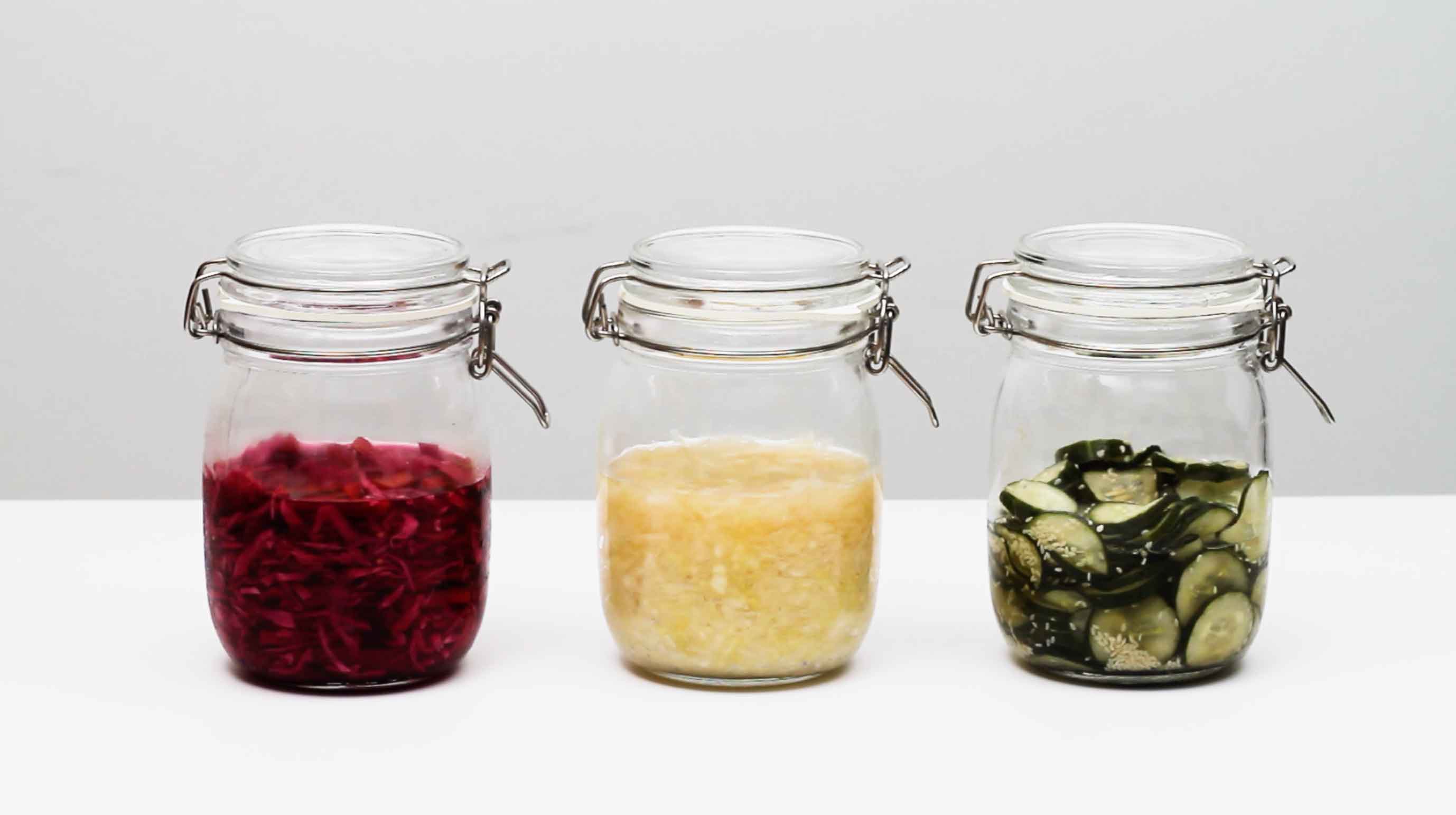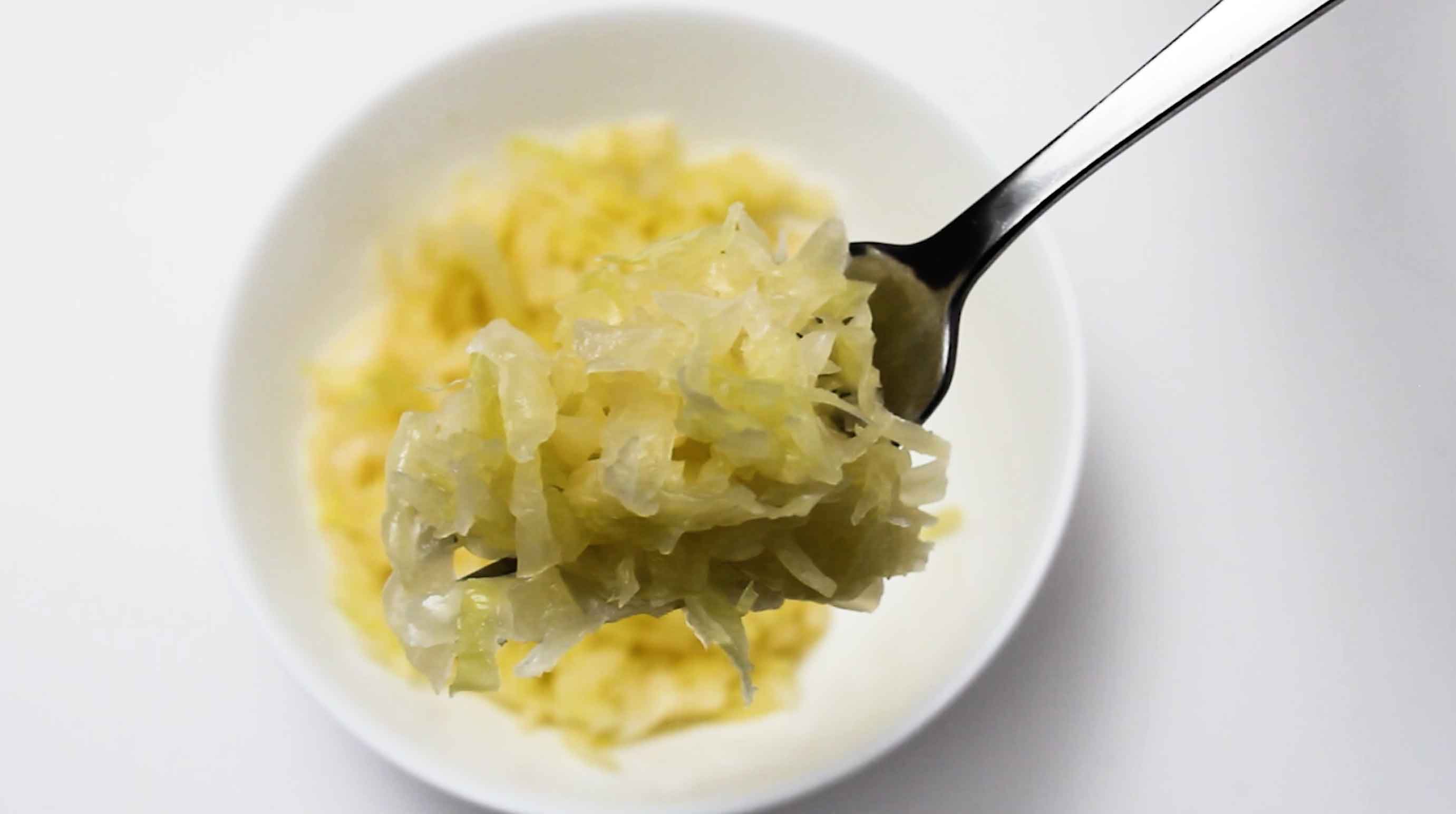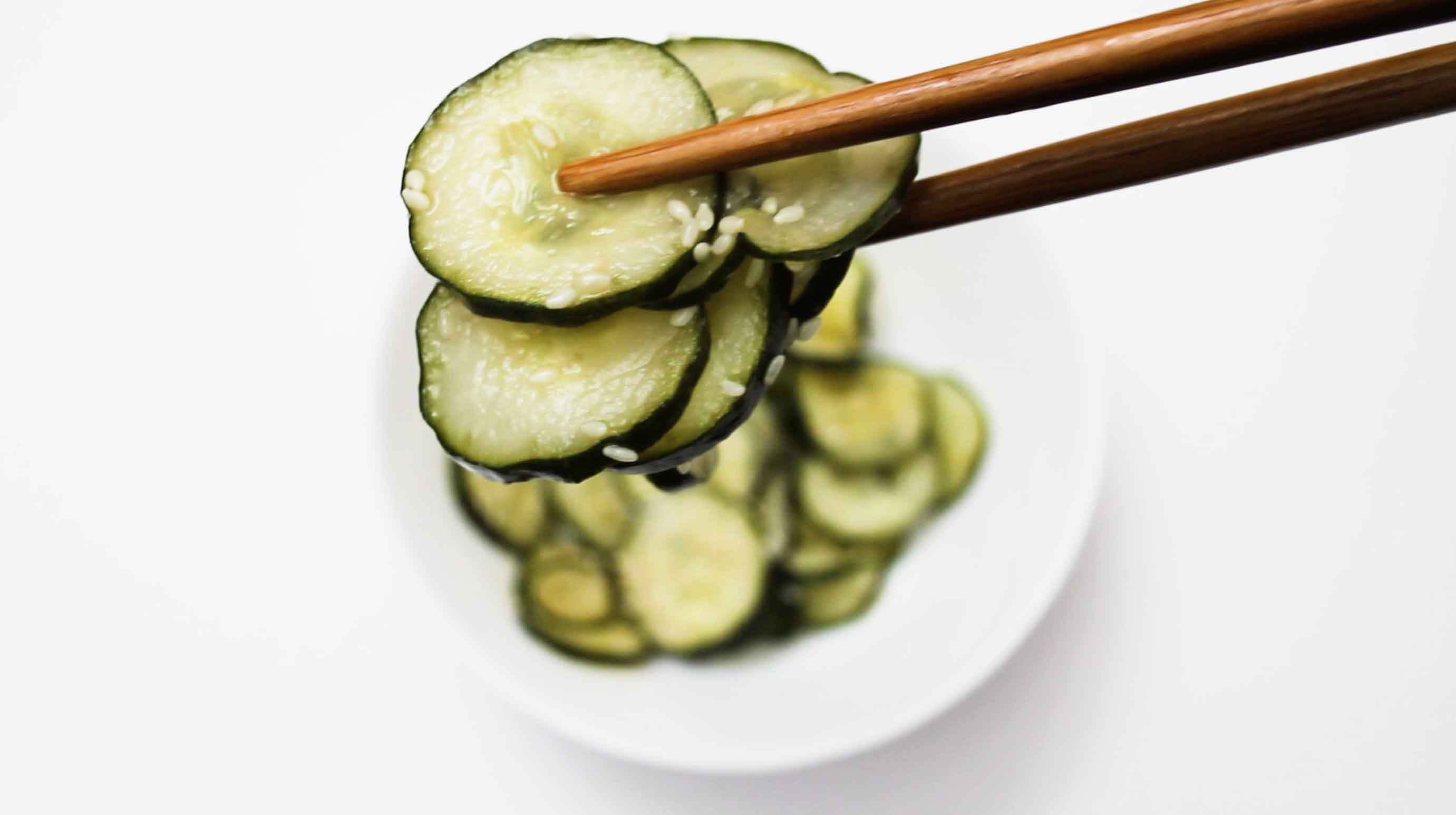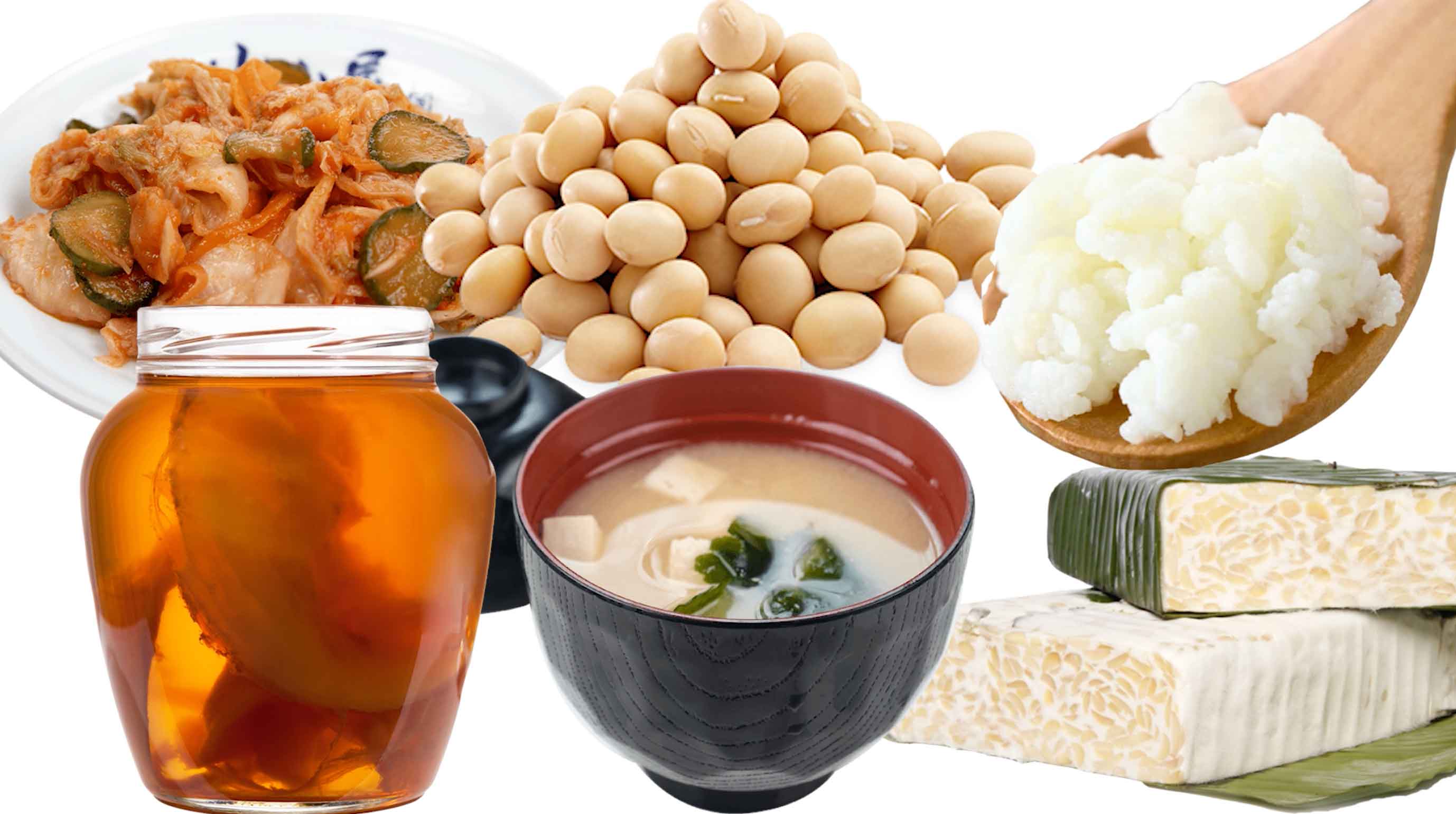What is fermentation?
Fermentation is essentially one of the oldest forms of food preservation.
Fermented foods go through the process in which natural bacteria feeds on the sugar and starch and creates lactic acid.
When vegetables like cabbage and cucumbers are left to steep and sit until the sugars are broken down to promote the growth of bacteria, this is when the vegetables are fermented.
Fermentation preserves vegetables raw and without heat, so it retains their vitamins, minerals, and enzyme. Plus. fermentation of vegetable will enhances the nutrients in it.
Why I Eat Fermented Food & Not Raw
Let me just start by saying that, there are lots of benefits to eating raw vegetables and to most of you, you might feel absolutely fine eating your veggies raw. But if you find that consuming raw vegetables makes you feel bloated and slows down your digestion, then you’re like me.
Now, it is true that cooking slightly will destroy a little of the nutrients, which is only about 10% but you still have the remaining 90% that’s available for your body to absorb.
The Chinese believe that whatever you put in your stomach that is cold and raw, your body has to heat and cook. This takes your time, energy and slows down the metabolism. Hence, cooking vegetables slightly helps lighten the load and makes it easier for our body to digest.
So, I do consume some vegetables raw but only in small quantities, and I tend to consume more cooked and fermented vegetables.
Fermented vegetables make nutrients more readily available, they promote a healthy gut and contains probiotics. Since 70 – 80% of the immune system lies in the gut, having a healthy gut is extremely important and may even help you lose weight.
Can you eat too much fermented food?
Yes, it is possible to have TOO much of a good thing. Eat them often rather than in large quantities. So here’s a guideline, to start off, consume ½ cup of fermented vegetables or 2 oz of your favourite fermented liquid.
If fermented foods are completely new to your system, you may experience mild to moderate symptoms, which are completely natural and healthy for your body. These symptoms can include gas, breakouts, headaches, and more.
Nothing wrong is happening; in fact, only good things are happening. Your body is getting rid of toxins that need to be released. You have to give your body time to adjust and adapt.
The fermented foods are replacing those toxins with beneficial, life-enhancing bacteria that will ultimately make you feel and look great! As your body slowly adjusts to eating fermented foods and drinks, you can start to add one additional serving. So add another ½ cup of fermented vegetables or 2oz of fermented liquids in 2 of your meals.
Again, moderation is the key to good health.
How to ferment vegetables?
You don’t need to spend lots of money to buy fermented food or drinks, you CAN make them at home! Fermenting vegetables are NOT difficult and it requires very little ingredients but lots of patience.

I’m going to share with you 3 simple recipes to get you started!
Fermentation of Sauerkraut

Ingredients:
- 3lbs / 2kg of Green Cabbage, shredded
- 1.5 tbsps. Pink Himalayan Salt
Steps:
- Simple combine the cabbage and salt. Begin working the salt into the cabbage by massaging and squeezing the cabbage with your hands until the cabbage is watery and limp. This will take about 5 to 10 minutes. Be patient!
- Grab handfuls of the cabbage and pack them into your jars. Pour any liquid released by the cabbage into the jar.
- Then place one of the larger outer leaves of the cabbage over the surface to cover the cabbage.
- To weigh the cabbage down, slip a smaller jar into the mouth of the jar. I’ve added stones into the small jar to add weight.
- You want to make sure that the cabbage is fully submerged beneath its liquid. Cover the mouth of the jar with a cloth to make sure it’s airtight.
- Allow the cabbage to ferment for 3 to 10 days, keeping the sauerkraut away from direct sunlight and at a cool room temperature
This sauerkraut is a fermented product so it will keep for at least two months and often longer if kept refrigerated.
Easy Japanese Pickled Cucumber

Ingredients
- 3 Japanese cucumbers, thinly sliced
- 2 tsps. Salt
- ¼ cup Rice Vinegar
- 2 tbsps. Brown Sugar
- 2 tbsps. Sesame Seeds
Steps
- In a bowl, add the cucumber and sprinkle it with the salt. Set aside for five minutes.
- Rinse off the salt and drain the cucumbers.
- Combine all ingredients in a bowl: rice vinegar, brown sugar, sesame seeds. Mix well.
- Transfer into a jar and let it sit in the fridge for at least 24 hours.
And this is really to be eaten. This goes perfectly with rice!
Pickled cabbage and carrot
Ingredients
- 3 cups Red Cabbage, shredded
- 1 cup Carrot, thinly sliced
- 2 tsps. Salt
- 1 cup Rice Vinegar
- 3/4 cup Brown Sugar
- ½ tsp. Sesame Oil
- Pinch of hot chili flakes
Steps
- In a large bowl, toss the cabbage together with the carrots. Set aside.
- In saucepan over medium heat, stir together the vinegar, sugar, sesame oil chili flakes and salt. Mix until sugar has dissolved for about 3 minutes. Allow the sauce mixture to cool down.
- Then pour it over the cabbage and carrot mixture and toss well. Cover and chill in the fridge for at least 8 hours or overnight. The next day, transfer the cabbage mixture into airtight jar.
All the recipes will store for a long time in the fridge, So you can make a huge batch and consume 1 – 2 servings daily.

Miso, kombucha, tempeh, soy, kimchi, kefir are other fermented foods you can also add into your diet. Try all these recipes out and start to add more fermented food into your diet. You can start with 1 serving and slowly increase it to 2 servings



